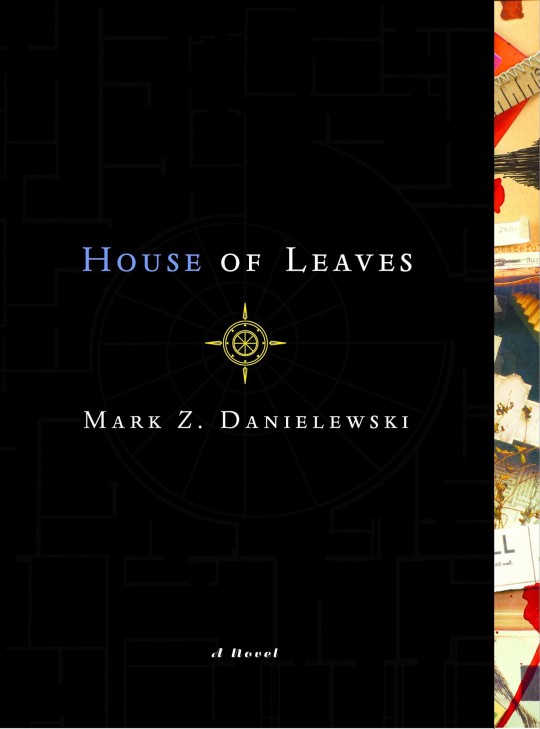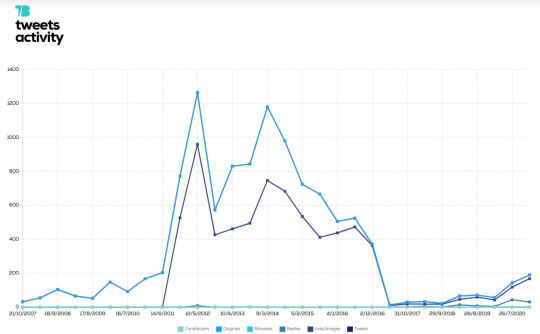#2020 review questionnaire
Text





By: Christina Buttons
Published: Jun 3, 2024
A new study has found that trans-identified female patients on testosterone face an increased risk of lacerations and vaginal bleeding after undergoing a “minimally invasive hysterectomy.” The study follows another report from just one month earlier, which found that trans-identified females on testosterone have a high incidence of pelvic floor dysfunction.
Researchers at the Medical College of Wisconsin conducted a study analyzing past data from surgical and medical records at a single, large academic center. They reviewed phone calls, emergency room visits, and clinic visits over 90 days post-surgery. The aim was to compare complications in trans-identified female patients on testosterone with those not on testosterone.
The study included patients aged 18 to 55 who had a minimally invasive hysterectomy, with or without the removal of ovaries, between January 2014 and December 2022. This procedure, which involves removing the uterus through small incisions, is often offered to transgender patients as a “gender-affirming hysterectomy.”
The study group included 88 patients on testosterone who identified as male, transgender male, genderqueer, or nonbinary. The control group included 242 patients who identified as female, genderqueer, or nonbinary and were not using testosterone. Patients using testosterone were generally younger, had lower body weight, better overall health, and were more likely to have never given birth, with a median of 2.5 years on testosterone.
The study found that patients on testosterone had a higher risk of experiencing vaginal lacerations during surgery that required repair. This risk was about 3.3 times higher compared to those not on testosterone. After surgery, patients on testosterone reported more instances of vaginal bleeding through EMR messages or phone calls. The risk of reporting vaginal bleeding was about 1.74 times higher for those on testosterone. More patients on testosterone also needed vaginal estrogen after surgery to manage symptoms like dryness and discomfort. This was observed in 8% of testosterone users compared to 1.7% of those who were not on testosterone.
The study demonstrates that using testosterone before surgery may increase the risk of vaginal tears during the operation and may cause more vaginal bleeding afterward.
“Gender-affirming” hysterectomies are becoming more common among trans-identified female patients. A 2023 study identified 4,489 hysterectomies performed between 2016 and 2020, representing 9.3% of the 48,019 patients who underwent some form of “gender-affirming” surgery at hospitals in the United States. The data was collected from the Nationwide Ambulatory Surgery Sample (NASS), an outpatient hospital surgery database. However, this is likely a significant underestimate, as it only includes hospital-based data and not private surgery centers. While typically performed on individuals aged 18 and older, it has occasionally been done on those under 18.
Aside from postoperative complications, testosterone use is associated with other health concerns. For example, a new study from April 2024 found that 94.1% of trans-identified females on testosterone reported experiencing some form of pelvic floor dysfunction, and 86.7% reported urinary symptoms.
Conducted between September 2022 and March 2023, the study used an online questionnaire to gather data from 68 females who identify as transgender men over 18 using testosterone.
The study found that the majority of participants reported a range of pelvic floor dysfunction symptoms. Specifically, 69.1% of participants reported symptoms related to the storage of urine, 52.9% experienced issues related to sexual function, 45.6% reported anorectal symptoms, and 39.7% experienced unintentional passing of gas. Those with urinary incontinence symptoms reported a moderate severity of the condition. The study concludes that transgender men using testosterone have a high incidence of pelvic floor dysfunction, with a particularly high prevalence of urinary symptoms.
--
Abstract
Study Objective
To evaluate operative complications and healthcare utilization in transgender patients on testosterone undergoing minimally invasive gender affirming hysterectomy compared to control patients.
Design
We performed a retrospective cohort study. Operative reports were used to gather information on intraoperative complications. We collected information on postoperative complications, EMR messages, phone calls, emergency department utilization, and clinic visits through a 90-day postoperative period. Healthcare utilization reasons were categorized as vaginal bleeding, pain, vaginal discharge, dysuria, urinary retention, bowel concern, incision concern, or other.
[..]
Measurements and Main Results
Patients using testosterone were younger, had a lower BMI, lower ASA class, and were more likely to be nulliparous. The median time patients used testosterone was 2.5 years (1.5-5.0). Patients on testosterone are at increased risk of intraoperative perineal lacerations requiring repair (RR 3.3, CI 95% [1.03 – 10.5]). A higher number of patients on testosterone reported vaginal bleeding via EMR message or phone call (RR 1.74 CI 95% [1.1 – 2.7]) compared to controls. No difference in reasons for ED visits was noted. The use of postoperative vaginal estrogen started at the postoperative visit was more frequent in the testosterone using patients (7 [8.0%] vs 4 [1.7%], p=.01).
Conclusion
This study demonstrates that testosterone use preoperatively may increase risk of intraoperative vaginal laceration requiring repair. Testosterone use also correlates with increased reports of vaginal bleeding through EMR message, phone call, and clinic visit. These results contribute new evidence to include in preoperative counselling and support existing evidence surrounding the safety of gender-affirming hysterectomy.
==
"Informed consent" really is a myth considering the doctors have no damn idea what this stuff is doing to you.
#Christina Buttons#Colin Wright#medical scandal#medical corruption#medical malpractice#testosterone#wrong sex hormones#cross sex hormones#gender affirming care#gender affirming healthcare#gender affirmation#gender affirming hysterectomy#hysterectomy#vaginal laceration#medical complications#religion is a mental illness
7 notes
·
View notes
Text
Twenty-seven years since the last revision in 1997, the White House Office of Management and Budget (OMB) has altered its Statistical Policy Directive No. 15 (SPD 15)—providing a much-needed update in the standards for defining race and ethnic categories for use in data collection across all government agencies.
The revised standards are not perfect, and OMB promises to continue monitoring their use. But they are a marked improvement in light of ongoing shifts in U.S. racial and ethnic demographics, because they will allow more flexibility for individuals in identifying how they see themselves.
The new changes will affect the “minimal categories” for data collection—the race and ethnicity data that every federal survey will be required to ask about. In addition to the five “race” categories that have been used for decades (reflecting persons identifying as White, Black or African American, Asian, Native Hawaiian or Pacific Islander, or American Indian or Alaska Native), the new minimal categories will also include “Hispanic or Latino” and “Middle Eastern or North African” (or MENA). These two new categories are not traditional racial categories; therefore, this classification will be noted as one of “race and/or ethnicity.”
The addition of the Hispanic or Latino category results from the elimination of the separate “Hispanic/Non Hispanic” question which was previously asked in addition the race question. Research from the Census Bureau and others showed that when posed with separate ethnicity and race questions, a large share of Hispanic or Latino respondents did not identify with traditional racial categories and that a “combined” race/ethnic question yielded far more valid results. In this new classification, Hispanic or Latino respondents, like those of other groups, can choose to identify with other racial categories as well, but will not be required to.
The addition of the MENA category for people of Middle Eastern and North African descent stems from years of lobbying from MENA-related communities. Prior to the new standards, MENA was often offered as subcategory of “White.”
Perhaps most importantly, the new standards dictate that as a default, government agencies will collect data on detailed race and ethnic groups within each of the seven minimal race and ethnic categories. And where possible, agencies will provide “check boxes” for the five largest detailed groups (based on the 2020 census) as well as an open-ended “write in” box to capture other groups. (One exception is for the American Indian or Alaska Native category, for which only a write-in option is required.) Moreover, the instructions on questionnaires that allow both minimal and detailed categories encourage respondents to select “all that apply,” thus facilitating the collection of multiracial and multiethnic categories.
Clearly, the expansion of the data that government agencies collect will provide far greater opportunities to examine racial and ethnic disparities on measures of economic well-being, health, education, and more from variety of sources. With that said, OMB is aware of the challenges involved with their implementation—it provides guidelines for their presentation and promises to maintain a standing Interagency Committee to carry out continuing research and review of SPD 15. Now, it is up to policymakers, scholars, and practitioners to communicate their experiences with the new standards to the wider network of stakeholders and agencies in order to take advantage of this long overdue effort to improve the nation’s diversity data.
In this Around the Halls piece, scholars from across Brookings give their early thoughts on these changes and their potential impacts.
5 notes
·
View notes
Text
Radiotherapy resources in Brazil (RT2030): a comprehensive analysis and projections for 2030

Background
The demand for radiotherapy in Brazil is unfulfilled, and the scarcity of data on the national network hampers the development of effective policies. We aimed to evaluate the current situation, estimate demands and requirements, and provide an action plan to ensure access to radiotherapy for those in need by 2030.
Methods
The Brazilian Society for Radiation Oncology created a task force (RT2030) including physicians, medical physicists, policy makers, patient advocates, and suppliers, all of whom were major stakeholders involved in Brazilian radiotherapy care. The group was further divided into seven working groups to address themes associated with radiotherapy care in Brazil. From March 1, 2019, to Aug 3, 2020, there were monthly meetings between the group's leaders and the Central Committee and six general meetings. First, a comprehensive search of all different national databases was done to identify all radiotherapy centres. Questionnaires evaluating radiotherapy infrastructure and human resources and assing the availability, distribution, capacity, and workload of resources were created and sent to the radioprotection supervisor of each centre. Results were analysed nationally and across the country's regions and health-care systems. A pre-planned review of available databases was done to gather data on active radiation oncology centres and the distribution of radiotherapy machines (linear accelerators [LINACs]) across Brazil. We used national population and cancer incidence projections, recommended radiotherapy usage from the medical literature, and national working patterns to project radiotherapy demands in 2030. An action plan was established with suggestions to address the gaps and meet the demands.
Findings
The database search yielded 279 centres with an active radiotherapy registry. After applying predefined exclusion criteria, 263 centres were identified that provided external beam radiotherapy machines with or without brachytherapy. All 263 operational centres answered the questionnaires sent on Dec 9, 2019, which were then returned between Jan 1 and June 30, 2020. There were 409 therapy machines, 646 radiation oncologists, 533 physicists, and 230 989 patients undergoing radiotherapy (150 628 [65·2%] in the public health-care system and 80 937 [35·0%] in private). The mean annual occupation rate was 566 patients per treatment machine (SD 250). The number of residents per treatment machine ranged from 258 333 to 1 800 000. Technology availability varied considerably among regions and systems. In 2030, 639 994 new cancer cases are expected, which will require 332 797 radiotherapy courses. Therefore, 530 LINACs, 1079 radiation oncologists, and 1060 medical physicists will be needed.
Interpretation
The expected increase in cancer incidence in the coming years will probably increase the disparities in cancer care and the burden for Brazilian patients. We provide a roadmap of the current situation and the particularities of the Brazilian radiotherapy network, which can serve as a starting point for cancer policy planning to improve this scenario.
Read the paper.
#brazil#science#politics#healthcare#brazilian politics#mod nise da silveira#image description in alt
2 notes
·
View notes
Link
0 notes
Text
[ad_1]
Embattled Austin developer Nate Paul continues to delay the stack of authorized challenges towards him.
The World Class Holdings CEO is looking for a delay in his financial institution and wire fraud trial till January 2025 as a result of sheer quantity of proof and the complexity of the case, KXAN reported.
The trial, already postponed as soon as for related causes, was slated to start on July 29. However Paul’s authorized staff argued that the present timeline is inadequate for reviewing over 4 million paperwork, exacerbated by a current superseding indictment that introduces recent complexities.
“The federal government investigated this case for almost a decade, and little question has its personal view of what's most vital,” Paul’s attorneys mentioned within the movement. “Protection counsel is entitled to enough time to conduct its personal assessment of the invention, and assess its relative significance.”
The mountain of proof features a Microsoft Entry database encompassing 700 financial institution accounts, FBI e-mail correspondences relationship again to 2014, Texas State Securities Board recordsdata, questionnaires despatched by the FBI to World Class traders in 2020 and different information instrumental to the case, the outlet reported.
Whereas federal prosecutors didn’t oppose rescheduling, they prompt a trial date in October 2024, which Paul’s staff rejected. The case towards Paul originated in June 2023, with costs of creating false statements to mortgage lenders. A superseding indictment in November included 4 extra wire fraud and conspiracy costs spanning eight years, implicating Paul in fraudulent actions associated to restricted partnerships and misrepresentation of monetary info.
Paul has maintained his innocence and pleaded not responsible to all costs.
A once-thriving Austin actual property participant, he has handled a slew of lawsuits, bankruptcies and foreclosures because the FBI raided his workplaces in 2019. He was on the middle of Texas Lawyer Common Ken Paxton’s impeachment trial final 12 months, as he was accused of bribing Paxton in trade for authorized help associated to the foreclosures.
In December, Paul failed to look in courtroom in a case associated to a number of properties he previously owned that had been offered through foreclosures public sale.
—Quinn Donoghue
Learn extra
[ad_2]
Supply hyperlink
0 notes
Text
GAD Empowers Ofgem: Power Sector Insights

GAD's Pivotal Role in Power Sector Pension Review
In a significant move, the Government Actuary's Department (GAD) has provided crucial support to the Office of Gas and Electricity Markets (Ofgem). The collaboration involved a meticulous reasonableness review of pension schemes associated with various power companies operating in the UK.
GAD's High-Level Assessment
GAD, through its expertise, conducted a comprehensive high-level review of the defined-benefit pension costs incurred by network operators (NWOs). The findings of this review play a vital role in assisting Ofgem in evaluating price control allowances, particularly concerning the deficits in established pension schemes.
Addressing Consumer Interests: NWO Questionnaires
GAD actively engaged with responses from NWOs, as provided in questionnaires by Ofgem. These responses shed light on how pension schemes considered the interests of consumers. This consumer-centric approach aligns with Ofgem's commitment to ensuring fairness and transparency in the regulated power sector.
Regular Ofgem Scrutiny on Pension Allowances
NWOs extend occupational pension schemes to their employees, contributing to their retirement income. Ofgem, in its regulatory capacity, consistently reviews the pension allowances that NWOs can recover from consumers through regulated revenue charges.
GAD's involvement in this sphere is not new; it previously supported Ofgem in a similar review in 2020. In the latest 2023 review, GAD examined changes in benefit design, investment strategy, and actuarial valuations since the last assessment.
Insights and Key Findings
GAD's thorough review revealed a series of noteworthy developments within the power sector's pension landscape:
- Improved Funding Positions: Five schemes now boast a surplus, indicating a positive trend in funding positions.
- De-Risking Strategies: There is an observed increase in de-risking strategies within the investment approaches.
- Inflation Considerations: High inflation rates prompted a closer look at how pension schemes handle inflation-linked increases, with provisions to cap such increases if inflation exceeds 5%.
Consumer-Centric Actions by Power Companies
All companies involved demonstrated their commitment to consumer interests by undertaking various actions, including:
- Commissioning analyses focused on consumer interests.
- Negotiating with trustees for valuation concessions.
- Engaging with trustees on investment strategies.
- Managing liabilities to prevent consumers from facing undue exposure to higher costs.
Ofgem's Decision Letter and Regulatory Policy
In response to GAD's report, Ofgem issued a decision letter, reflecting the regulatory policies shaped by the insights gained from the pension scheme review. This underscores Ofgem's dedication to transparency and responsiveness in the power sector.
GAD's Insights: A Changing Landscape
Scott Madden, a GAD actuary and one of the report's authors highlighted the evolving defined benefit landscape. He noted the recent environment characterized by higher inflation and interest rates, coupled with the development of longer-term objectives reflected in the pension schemes of network operators.
Madden stated,
"These stakeholders have a particular challenge in ensuring that the consumer interest is appropriately taken into account, and we were happy to support Ofgem in forming its view."
Contributions and Actuarial Valuations
Contributions required to sustain defined benefit pension schemes are periodically assessed through actuarial valuations. GAD's scrutiny did not identify major concerns in these areas during the latest review, reinforcing confidence in the robustness of the pension systems within the power sector.
As the power sector continues to evolve, GAD's invaluable support ensures that consumer interests remain at the forefront of decision-making, fostering transparency, and accountability in the regulated industry.
Sources: THX News & Government Actuary's Department.
Read the full article
#Actuarialvaluationsdefinedbenefitpension#Consumer-centricactionspowercompanies#Defined-benefitpensioncosts#GADinsightspowersectorevolution#GADOfgempensionschemereview#Inflationconsiderationspensionschemes#NWOspensionallowancesconsumers#Ofgemdecisionletterregulatorypolicy#Powersectorregulatoryscrutiny#ScottMaddenevolvingpensionlandscape
0 notes
Text
More than 1.1 million sea turtles poached over last three decades
https://sciencespies.com/nature/more-than-1-1-million-sea-turtles-poached-over-last-three-decades/
More than 1.1 million sea turtles poached over last three decades

One of the most serious threats to wildlife biodiversity, in addition to the climate crisis, is the illegal killing and trafficking of animals and plants. Despite many laws against the black-market wildlife trade, it is considered to be one of the most lucrative illicit industries in the world.
Animals, especially endangered and threatened species, are often exploited and sold for their pelts or used as medicine, aphrodisiacs, curios, food and spiritual artifacts.
In a new study published in Global Change Biology, Arizona State University researchers estimate that more than 1.1 million sea turtles have been illegally killed and, in some cases, trafficked between 1990 and 2020. Even with existing laws prohibiting their capture and use, as many as 44,000 sea turtles were exploited each year over the past decade in 65 countries or territories and in 44 of the world’s 58 major sea turtle populations.
Despite the seemingly large number of poached turtles, the study shows that the reported illegal exploitation of sea turtles declined by approximately 28% over the last decade — something that surprised the researchers. They initially expected to see an overall increase in reported poaching.
“The decline over the past decade could be due to increased protective legislation and enhanced conservation efforts, coupled with an increase in awareness of the problem or changing local norms and traditions,” says Kayla Burgher, co-first author of the study and a doctoral student in ASU’s environmental life sciences program in the School of Life Sciences.
In addition to the slight decline, the researchers found that most of the reported illegal exploitation over the past decade occurred in large, stable and genetically diverse sea turtle populations.
advertisement
Jesse Senko, co-first author of the study and an assistant research professor with the ASU School for the Future of Innovation in Society says this discovery may be a silver lining to the high number of turtles illegally exploited. “What this means is that most of these sea turtles came from healthy, low-risk populations, which suggests that, with a few exceptions, current levels of illegal exploitation are likely not having a major detrimental impact on most major sea turtle populations throughout the world’s oceans.”
Senko adds, however, the results should be cautiously considered. “Assessing any illegal activity is difficult, and the take and trade of sea turtles is no exception, especially when it becomes organized or connected to crime syndicates. Our assessment also did not include eggs or turtle products, such as bracelets or earrings made from sea turtle shells that could not be easily attributed to individual turtles,” says Senko.
In the study, the researchers reviewed data from peer-reviewed journal articles, archived media reports, NGO reports, and online questionnaires to determine a comprehensive look at existing information on exploited sea turtles. The study revealed additional patterns and trends that may assist in determining conservation management priorities. For example, Vietnam was the most common country of origin for illegal sea turtle trafficking, while China and Japan served as destinations for nearly all trafficked sea turtle products. Similarly, Vietnam to China was the most common trade route across all three decades.
Across the 30-year study period, 95% of poached sea turtles came from two species — green and hawksbill turtles — both of which are listed under the U.S. Endangered Species Act. Also, Southeast Asia and Madagascar emerged as major hotspots for illegal sea turtle take and trade, particularly for critically endangered hawksbills, which are prized in the illicit wildlife trade for their beautiful shells.
“Our assessment is an important foundation for future research and outreach efforts regarding illegal sea turtle exploitation. We believe this study can help conservation practitioners and legislators prioritize conservation efforts and allocate their resources to best help protect sea turtle populations from harmful levels of exploitation worldwide,” says Burgher.
The research team says much more needs to be done to sustain global biodiversity.
“Increased support for governments lacking the resources to protect sea turtles is needed, along with support for communities to sustain human well-being in the face of restrictions or bans on sea turtle exploitation. We must develop conservation strategies that benefit both people and turtles,” says Senko.
#Nature
#2022 Science News#9-2022 Science News#acts of science#Earth Environment#earth science#Environment and Nature#everyday items#Nature Science#New#News Science Spies#Our Nature#planetary science#production line#sci_evergreen1#Science#Science Channel#science documentary#Science News#Science Spies#Science Spies News#September 2022 Science News#Space Physics & Nature#Space Science#Nature
0 notes
Text
Emman Andrew Lantaca
COVID 19 PANDEMIC
Introduction:
The World Health Organization (WHO) declared coronavirus disease 2019 (COVID-19) to be a Public Health Emergency of International Concern on January 30 and a pandemic on March 11, 2020 (2). COVID-19 predominantly presents with respiratory symptoms (cough, sneezing, and sore throat), along with fever, fatigue and myalgia. It is thought to spread through droplets, contaminated surfaces, and asymptomatic individuals By the end of April, over 3 million people have been infected globally.
The first country to identify the novel virus as the cause of the pandemic was China. The authorities responded with unprecedented restrictions on movement. The response included stopping public transport before Chinese New Year, an annual event that sees workers' mass emigration to At the beginning of May, the Philippines recorded 8,772 cases and 579 deaths .
China was one of the more severely affected countries in Asia in the early stage of pandemic (7) while the Philippines is still experiencing an upward trend in the COVID-19 cases (6). The gross national income (GNI) per capita of the Philippines and China are USD 3,830 and 9,460, respectively, were classified with lower (LMIC) and upper-middle-income countries (UMIC) by the Worldbank (8). During the COVID-19 pandemic, five high-income countries (HIC), including the United States, Italy, the United Kingdom, Spain, and France, account for 70% of global deaths (9). The HIC faced the following challenges: (1) the lack of personal protection equipment (PPE) for healthcare workers; (2) the an overstretched healthcare system with the shortage of hospital beds, and a large number of death cases from nursing homes. The COVID-19 crisis threatens to hit lower and middle-income countries due to lockdown excessively and economic recession. A systematic review on mental health in LMIC in Asia and Africa found that LMIC: do not have enough mental health professionals; the negative economic impact led to an exacerbation of mental issues; there was a scarcity of COVID-19 related mental health research in Asian LMIC. This systematic review could not compare participants from different middle-income countries because each study used different questionnaires. During the previous Severe Acute Respiratory Syndrome (SARS) epidemic, the promotion of protective personal health practices to reduce transmission of the SARS virus was found to reduce the anxiety levels in the community.
Objective: The differences between the physical and mental health of people living in a lower-middle-income country (LMIC) and upper-middle-income country (UMIC) during the COVID-19 pandemic was unknown. This study aimed to compare the levels of psychological impact and mental health between people from the Philippines (LMIC) and China (UMIC) and correlate mental health parameters with variables relating to physical symptoms and knowledge about COVID-19.
Methods: The survey collected information on demographic data, physical symptoms, contact history, and knowledge about COVID-19. The psychological impact was assessed using the Impact of Event Scale-Revised (IES-R), and mental health status was assessed by the Depression, Anxiety, and Stress Scale (DASS-21).
Findings: The study population included 849 participants from 71 cities in the Philippines and 861 participants from 159 cities in China. Filipino (LMIC) respondents reported significantly higher levels of depression, anxiety, and stress than Chinese (UMIC) during the COVID-19 (p < 0.01) while only Chinese respondents' IES-R scores were above the cut-off for PTSD symptoms. Filipino respondents were more likely to report physical symptoms resembling COVID-19 infection (p < 0.05), recent use of but with lower confidence on medical services (p < 0.01), recent direct and indirect contact with COVID (p < 0.01), concerns about family members contracting COVID-19 (p < 0.001), dissatisfaction with health information (p < 0.001). In contrast, Chinese respondents requested more health information about COVID-19. For the Philippines, student status, low confidence in doctors, dissatisfaction with health information, long daily duration spent on health information, worries about family members contracting COVID-19, ostracization, and unnecessary worries about COVID-19 were associated with adverse mental health. Physical symptoms and poor self-rated health were associated with adverse mental health in both countries (p < 0.05).
Conclusion: The findings of this study suggest the need for widely available COVID-19 testing in MIC to alleviate the adverse mental health in people who present with symptoms. A health education and literacy campaign is required in the Philippines to enhance the satisfaction of health information
Living through the Covid-19 pandemic, many have seen a number of ethical, legal, and social issues arise as a result of the virus rapidly spreading worldwide. This timely special issue is designed to be a mid-stream retrospective: look at presenting a broad array of topics at the intersection of science and society, from a range of researchers, in many different fields, in light of what we have learned so far. The issues that have arisen are both as a direct result of the virus itself, whereas others arose as a result of various responses to the virus.
Like the virus itself, the issues that the pandemic raises are moving targets with factors and conditions changing over time, often due to unprecedented necessity. Hollywood and some percipient billionaires have been predicting this event for some time, and some of the issues that we are now facing have been raised before, but not taken seriously enough. Even with their foresight, we were far from ready for the many ethical, legal, and social concerns that have arisen.
The question is, when is the next event like this, and will we be ready for that one. Especially pertinent is what we have learned from this experience, both good and bad.
This issue will collect papers from those who would like to make sure that we are ready, or at least trying to get there.
The aim of this topic is to summarize the ethical information related to triage, contact tracing, quarantine measures, international law changes as we are going through coronavirus pandemic, and to reassess what we have seen thus far in light of this new knowledge.

Keywords: covid-19, pandemic, ESLI, patient screening, data privacy, contact tracing, quarantine measures, lockdown, drug and vaccine development
Important Note: All contributions to this Research Topic must be within the scope of the section and journal to which they are submitted, as defined in their mission statements. Frontiers reserves the right to guide an out-of-scope manuscript to a more suitable section or journal at any stage of peer review.
1 note
·
View note
Text
#6
I read two peer reviewed articles having to do with homelessness. The first one is titled Who’s Homeless and Whose Homeless by Ingrid Sahlin. This article is a report on research taken from Swedish Parliament transcripts containing mentions of homelessness and policy. Sahlin’s aim was to find a definition of which houseless populations were considered homeless and therefore Sweden’s responsibility, and which populations the government didn’t claim as theirs. She defines homeless as a person who is without a home, living in an emergency shelter, short term lodging, an institution, or in a “sublease contract with social services” (2020). Refugees and undocumented migrants are excluded from this definition, and therefore are not considered homeless and are not under the care of the Swedish government.
The conclusion found was that, for Swedish Parliament, “the term ‘our homeless often refers only to Swedish citizens…” (2020). Anyone who is houseless but without citizenship is seen as a possible threat to the economy, and to what is considered the “deserving poor” and homeless.
Sahlin’s research displays a clear association between homelessness and individual problems, such as mental health issues, drug abuse, and economic problems. This line of thought coincides with the research conducted by Vázquez et al. They performed a study questioning what attributes people believe to be likely causes of homelessness.
The study was performed in Madrid, Spain. These people were separated into two groups and were asked to complete a questionnaire on if they agreed or disagreed with a series of causes of homelessness, also known as causal attributes. One group was comprised of homeless people. The other group, called the domicile group, was made up of people “who had housing, were not using services designed for the homeless, and were not at risk of becoming homeless” (2018).
The causal attributes belong in three categories: individualistic, fatalistic, and societal (2018). Individualistic attributes are things like mental or physical illness, drug use, and being lazy. An example of a fatalistic attribute would be someone saying that they just have bad luck, or that it was fate that they ended up where they were. Societal attributes are outside an individual’s control, like economic crisis or being born into poverty.
The study found that both the homeless group and the domicile group agreed on similar reasons for homelessness. The consensus was that homelessness was most likely to have been the result of individualistic causes. The study also found that most viewed homeless people as “victims of circumstance”, seeing the negative individualistic attributes in a paternalistic light (2018).
While Sahlin and Vázquez et al both set out to discuss homelessness, they approached the topic from differing angles. Sahlin’s report showed how a societal entity view the homelessness, while the study in Madrid was done with individual people’s views in mind.
References
Sahlin, I. (2020). Who’s Homeless and Whose Homeless? Social Inclusion, 8(3), 43–53. https://doi.org/10.17645/si.v8i3.2818.
Vázquez, J. J., Panadero, S., & Zúñiga, C. (2018). Attributions About Homelessness in Homeless and Domiciled People in Madrid, Spain: “Why Are They Homeless People?” American Journal of Orthopsychiatry, 88(2), 236–247. https://doi.org/10.1037/ort0000246.
0 notes
Text
1. What did you do in 2020 that you’d never done before?
* An FCD convention (2258)
* got quarantined due to a international pandemic.
2. Did you keep your new years’ resolutions, and will you make more for next year?
I don’t do them
3. Did anyone close to you give birth?
not sure of timing, but my cousin Jade i think, though by “close” i only mean by blood, we’ve not had dealings since she was in High School.
4. Did anyone close to you die?
a friend (no names for the sake of honour)
a friends father (no names for the sake of honour)
a cousins familiar (no names for the sake of honour)
5. What countries did you visit?
none.
6. What would you like to have in 2021 that you lacked in 2020?.
Have some semblance of an actual life.
7. What dates from 2020 will remain etched upon your memory, and why?
the end of Feb 2020 - I finally me Jason Carter, and yes I will be going on about this repeatedly for years to come.
also in Feb I saw Counterfeit for what..i never believed would be the last time.
8. What was your biggest achievement of the year?
not murdering someone count?
9. What was your biggest failure?
for a change i don’t have an answer to that.. not on I’m willing to post publicly anyway.
10. Did you suffer illness or injury?
no
11. What was the best thing you bought?
either my little black owl bag (codenam Morningstar)
or one of the ghosts.
12. Whose behaviour merited celebration?
Heather Louise Sharpe. takes a lot to survive what she has this year and not go to pieces.
13. Whose behaviour made you appalled and depressed?
as always i could quote a number of politicians and people in and out of showbiz.
there have been a few fandom people and moments too.
but personally speaking.. I was rather.. disgusted by someone I had thought actually possessed a brain (a hard thing to do where they come from) but as always I was proved wrong
14. Where did most of your money go?}
survival. and for me that means geekery
15. What did you get really, really, really excited about?
MEETING - JASON - CARTER
and some other stuff which consequently never happened and never likely will.
16. What song will always remind you of 2020?
COunterfeit - It gets better. both becaue it got me through a lot of the year and cos.. well. just cause
17. Compared to this time last year, are you:
a) happier or sadder? meh.
b) thinner or fatter? meh.
c) richer or poorer? poorer
18. What do you wish you’d done more of?
anything.
19. What do you wish you’d done less of?
being stuck in the house.
20. How did you spend Christmas?
not happened yet but will likely be stuck in the house watching reruns.
in my family unit its not classed as a ‘big’ thing, even less so this year
21. What was your favourite month of 2020?
Feb: Hu, Counterfeit, 2258
22. Did you fall in love in 2020? & 23. How many one-night stands?
I am a Sex repulsed Aromantic Asexual.. form your own answer
24. What was your favourite TV programme?
Cursed/Roswell/Charmed
25. Do you hate anyone now that you didn’t hate this time last year?
several. one in particular
26. What was the best book you read?
Ben Aaronovitch - False Values
27. What was your greatest musical discovery?
this year i’ve personally not made one, but Allys sent me 2 bands who i now love.
re-discovery however is another story - Black Veil Bridges saved my soul when Counterfeit split.
28. What did you want and get?
the 13th doctors coat. AND IT ACTUALLY FITS
not got it “yet” but I’ve finally ordered a Zat.
29. What did you want and not get?
question is mute cos if i wanted it i’ll get it next year unless your talking events due to the pandemic in which case.. hindsight is 2020 aint it
30. What was your favourite film of this year?
Cant say I have on tbf
31. What did you do on your birthday, and how old were you?
its this week lik 4 days from now. i’ll be 36 and short of on of my breif trips to york i’m doing exactly fuck all.(december + pandemic)
32. What one thing would have made your year immeasurably more satisfying?
how long you got?
* getting a holiday
* seeing my friends for more than a few hours
* getting to a con
* one of the few decent bands left not fracturing
* this country not being subjected to a bunch of silver spoon fed, tunnel visioned inbreeds and their leader the great hair fail.
33. How would you describe your personal fashion concept in 2020?
PJ dont last a year if you werar them 5/7 days
34. What kept you sane?
thats been debatable since i was 6 lol/.
but this year.. whats kept me “anchored.” is:
* My Pack
* Teen Wolf and other fandoms
* planing for 2021 even though I know my countries fked.
35. Which celebrity/public figure did you fancy the most?
see queston 22
36. What political issue stirred you the most?
I try to avoid politics, my family are all socialists and its like verbal torture in this house since i was old enough to realise it.
37. Who did you miss?
My Pack.
yes i got to see Adam, Heather and Ally for a few hours on and off throughout the yar, but thats like being stuck in solitary and only gettng to go outside once a month out of all 12 months.. not even that if i’m honest
40. Quote a song lyric that sums up your year.
Happy! Happy!
Happy! Happy!
Happy! Happy!Choose your poison
Poison!
Choose your poison
Poison!
Choose your poison
Poison!Everything is shutting down
(Shutting down, shutting down)
Everything is shutting down
(Shutting down, shutting down)
Everything is shutting down
(Shutting down, shutting down)
<Danny Elfman - Happy>
41. sum your __2020 up in pictures (IN NO ORDER)
will be dong that in another post as always
0 notes
Text
Favorite books read in 2021....I'll be honest, I don't easily remember everything I've read. That's why I started recording it all at the end of each month, but even that I only started doing in August. For instance, I know I read a number of nonfiction and poetry books this year which I really liked, but cannot for the life of me remember which. I'll remember certain titles only to vaguely recall reading them in 2020, during the first round of pandemia. So here are my favorites of the ones I've read since August of 2021, and had the good sense to write down:








1. House of Leaves by Mark Z. Danielewski
What is there to say about this book that hasn't been said? I cannot explain it in a way that will make sense to anyone who hasn't at least peeked inside the cover, like tucking your head around to peer down a long, dark hallway. It should be empty. You know it's empty. There hasn't been any sign that it's not empty. And yet, you still feel watched. This book is an experiment. A puzzle. A cipher. A love story. A nightmare. A questionnaire. If you do choose to read it, there will be no skimming. No distractions. No half measures. You must either give into the book fully, jumping into the lake without testing the water's temperature, or not at all.
2. Lighthousekeeping by Jeanette Winterson
This was my first foray into Ms. Winterson's writing, and I'm very glad for that. I spent the first half of this book thinking it was somewhat of a memoir, and I'm still not totally convinced it's not. The story (stories) is whimsical and dreamlike but entirely plausible, in a surreal sort of way. As if looking through a window smeared by the rain. It's a lovely little read for a cold day spent under the covers.
3. Uzumaki by Junji Ito
Oh boy what a fun and delightful and easy read! Certainly not a fucked up story with no light at the end of the long and spiraling tunnel, no sir.
4. Books of Blood by Clive Barker
Everytime I read good, cosmic horror (like Uzumaki) or contemporary horror (this one is a mix of both), I wonder yet again why anyone still reads HP Lovecraft or Stephen King...Clive Barker is, I believe, the most comparable to King. He touches on many of the same themes and fears, but in a refreshingly concise, much more enjoyable way. Finding out he's gay, and also wrote the Hellraiser and Candyman movies, was just a bonus.
5. Convenience Store Woman by Sayaka Murata
What a captivating little story! I loved the voice of the titular convenience store woman, and Murata's simple, elegant writing style. Most of the reviews I read of this book viewed it as a comedy or strange romance, but for me the story seemed sadder and darker than that. I think Convenience Store Woman is the story of a person whose neuroatypicalness means that in a world not designed with that in mind, she takes hold of the one thing she can do, which our capitalistic society has taught her is important: work. Her job becomes her identity. Her job becomes her meaning for life.
6. The Girl With All the Gifts by M. R. Carey
I watched the film adaptation before reading the book, but I highly recommend both. Zombie stories are my absolute favorite subgenre, so I'm constantly on the lookout for new and interesting versions of the concept. This book isn't the first zombie media to make the zombie the protagonist (Dead Heat by Del Stone Jr. was published in 1996, Stubbs the Zombie: Rebel Without a Pulse came out in 2005, The Sinister Mr. Corpse by Jeff Strand was published in 2007, Colin came out in 2008, Warm Bodies in 2010, etc. The first zombie protagonist is often credited to HP Lovecraft's story The Outsider, first published in 1926, but I hate that guy so I hesitate to credit him with anything.), or to create an evolved, more human-like zombie (The Resident Evil franchise has been evolving zombies since the first game release in 1996, In the Flesh premiered in 2011, Dylan Dog: Dead of Night (a truly terrible but fun movie about the underbelly of the monster world) came out in 2010, etc.) or even the first to question the very nature of the human vs zombies plot line: after all, if these zombies can think, speak and feel like humans, if they are for all intents and purposes alive, then what makes the survival of humanity more important than the survival of zombies? What makes a prey animal more integral to its ecosystem than its predator? But this book is the first to ask these questions from the mouth of a zombie child, which turns the conversation into one about generations: isn't it the adults' duty to let their children inherit the earth? Isn't that what evolution means?
7. The Refrigerator Monologues by Catherynne M. Valente
This is the book I recommend to anyone knee-deep in the "fanfiction vs real books" debate, because so far every book I see given as an example of fanfiction (Dante's Inferno, literal Greek mythology, etc) simply isn't, and furthermore I doubt anyone arguing that they are has ever actually read them. The Refrigerator Monologues, on the other hand, is fanfiction, and not only is it fanfiction, it's an open-palmed critique of the comic industry's treatment of women. It's a collection of short stories, each very clearly based on a famous fridged woman from classic superhero comics, though all the names and powers have been changed. It cannot be divorced from the media it's based on, because it exists to examine that media. If you like superhero media, this is a necessary read.
8. Aurora Leigh by Elizabeth Barrett Browning
A lovely epic poem with love and grief embroidered throughout--love of art, love of people, romantic love and platonic love and maternal love. Ultimately it's about two women who keep getting lost and then manage to find their ways together.
159 notes
·
View notes
Text
Teachers say they do not feel equipped to deal with peer-on-peer sexual abuse because they have had no training.
More than 1,500 UK teachers replied to a questionnaire from BBC Radio 4's File on 4 and teachers' union the NASUWT.
More than half said they did not think adequate procedures were in place in their schools to deal with abuse.
Many are also unsure how to deliver elements of a new sex-and-relationships curriculum, which the government says third parties might now help with.
In England, the Department for Education has introduced a compulsory Sex and Relationships Education (RSE) curriculum in all schools, focusing on relationships in primary schools and sex and relationships in secondaries.
It has also asked Ofsted to review peer-on-peer safeguarding procedures.
Of the teachers surveyed, almost a third said they had witnessed peer-on-peer sexual harassment or abuse and almost one in 10 said they saw it on a weekly basis.
The debate about a culture of sexual abuse at schools has escalated in recent months after a website set up for victims to post their experiences anonymously gained more than 16,000 posts - some from children as young as nine.
The Everyone's Invited website publishes anonymous allegations which refer mostly to sexual harassment carried out against young women by young men at their school or university.
The government has now launched a dedicated hotline with the NSPCC for young people who feel they have been harassed and abused.
Since the helpline launched at the beginning of April, it has received more than 350 calls, and 65 referrals have been made to agencies including social services and the police.
'I felt so alone'
Amina is now 19 and still trying to come to terms with what happened to her at high school. She says her harassment started when she was in Year 7, aged 11.
"I started to get bullied and people were making rumours up about me. They were saying I would go home with so many different guys and have sex with them - that was really upsetting for me.
"It was during the summertime and we were practising for PE, and then I'm sitting there with my friends and then there's this group of boys next to us. And then I just feel a hand on my back, forcing me onto the floor and then this boy starts grinding on me, and I think during that moment - I just completely froze.
"And then I look up at my teacher and then he looks at me and then he looks away. I just felt so alone in that moment. Part of me felt like it was my fault because of other people's responses. I remember telling myself just to stay strong and just wait until I got home to cry."
Amina is now being supported by the Rape Crisis charity.
The new RSE curriculum in England was introduced in September 2020.
Andrew Fellows, associate head of policy at child-protection charity the NSPCC, says that while the new lessons are a positive development, schools have not been given the support and guidance to deliver the new curriculum effectively.
"Coercive control, sexual consent, healthy relationships, online safety, pornography - that's all in there.
"But what schools haven't been given is the guidance and the support to cover that and to deliver that in a way that works for their students," he said.
Flora Cooper, head teacher of Crowmarsh Primary School in Oxfordshire, where staff have just started to teach the new RSE lessons, said: "In terms of external training, we've not had any.
"We actually haven't seen much being offered in terms of training and it is absolutely in the training - that's what is essential, which we don't have.
"Until the teachers are confident with the delivery of the content, then I don't think any of them will be confident and fully teaching the children the full curriculum. It feels as though we are on our own."
Ofsted is currently conducting a review of safeguarding policies and practices relating to sexual abuse in state and independent schools and colleges.
It was ordered by the government after thousands of young people - mostly girls and young women - contacted the Everyone's Invited website.
Children's Minister Vicky Ford said: "We've seen these enormously worrying and very shocking allegations that have come through the Everyone's Invited site.
"One of the things that Ofsted will be looking at in this review is, are schools getting enough training and support? Do they need, for example, third parties to come in and train elements of that curriculum?"
Anyone who has suffered sexual abuse at school can contact the dedicated NSPCC helpline on 0800 136 663.
112 notes
·
View notes
Text
2021 fic year in review 🌟
tagged by @capseycartwright and @homerforsure <3 to do the 2021 fic year in review - I probably should've combined these like @littlespooneven had the sense to do but hey ho!!
total number of completed works: 18 (14 fics 5 artworks)
total word count: 46097 (and some change with tumblr fics…!)
fandom’s i’ve written in: 911 (my shiny new beloved)
looking back, did you write more fic than you thought you would this year, less, or about what you expected?
I definitely wrote more than I thought I would. I was already writing less and less before the pandemic anyway (and my word count for 2020 was 164 words total) but then Wandavision woke up my drawing muse, and 911 woke up my writing muse <3 so even though I have a pile of WIPs that if I’d posted/finished would have naturally made that word count higher, this year I wrote the most since 2016 so I’m being kind to myself in saying that actually, I got back into writing after a year of nothing so that’s pretty cool.
what’s your own favourite story this year?
Wish we could cut all ties with the morning light -- because i wanted to write soft soft hurt/comfort for myself so that’s what I did.
And actually, Gently whispered hope too, because again, I wanted to introduce Buck to his baby niece so i did!
did you taking writing risks this year?
I don’t think so? Other than writing for a new fandom at least, which can be a little daunting, but I jumped in with baby-fic and never looked back :D
do you have any fanfic or profic goals for the new year?
Expanding on what I mentioned in the fic wrap-up post, I’d like to finish my WIP’s - namely the tsunami horror fic, and my 5x06 au. The latter is very do-able, it’s all mapped out, I’m just really bogged down with postgrad shit and that’s the only reason I haven’t already finished and posted it.
The tsunami fic is a lot more abstract and messy so I think aiming for Halloween again is the most realistic there. OH and my buck-gets-a-dog fic because it’s fun to write about a puppy and I’d like it be a thing that exists outside of my head and @diazactually s askbox ;)
And other than that I’d love to participate in Whumptober but I probably need to practice writing faster…!
most popular story of the year?
Are we destined to burn or will we last the night? - and I’m so so happy about that. It’s my longest fic in the fandom (so far!) and I genuinely worked really hard on it :)
story of mine most under-appreciated by the universe, in my opinion
This is so awkward for meeee because I’m very much of the ‘surprised anyone reads anything of mine’ mindset, but I guess Send me a postcard (when you get to where you're going) didn’t get as many kudos as some of the other fics I posted this year so maybe that?
most fun story to write
Can i choose a WIP?? Haha probably not in the spirit of this questionnaire but I’ve loved posting sunday snippets of my 5x06 au - the finished fic will probably be posted as a big one-shot so this way I still get to do the cliffhanger-teasing ;)
most unintentionally telling story
There’s a WIP in my fic pile that is *very very very* telling, but of the posted fic, maybe On my mind every second (under control ’til you’re in front of me) in parts
biggest disappointment
Honestly it’s just all the fic that I didn’t get around to finishing/posting. Some of which just doesn’t fit with s5 now (and it’s my own fault for not finishing them after the s4 finale). I started a fic over the summer with Christopher asking Eddie not to go back to work after his recovery. And it was all about Chris slowly coming to terms with his dad returning to the firehouse (thanks to Eddie and Buck and the 118 ofc) but it was very much written from the angle of Eddie *not* quitting because of Chris and. Well.
I know it can probably be reworked to suit (and god knows I was whining to Allison and Ciara enough to know it’s a possibility) I just don’t know if I’ll have time before the show returns and i know when the show comes back it’ll be messed up even moooore and yeah… *whines some more*
biggest surprise
Honestly that Are we destined to burn or will we last the night? did as well as it did? I was convinced I’d missed the finale-fic window but people seem to like it so yay!
my favourite part of fandom this year
*points to my insanely amazing talented and kind dash* you're all really really lovely :)
tagging: @renecdote (do another one ren do another one hey ren hey ren ren ren do another one ren) @hmslusitania @princessfbi @hopeintheashes @thekristen999 and @evanbucxley *but* if you've already done it, or you'd rather not, just ignore me! :)
20 notes
·
View notes
Text
Texas Family Court Extortion & DCPS Child Neglect
After seeing the June 6th, 2022 article The Texas Tribune released, “Judge plans to levy “substantial fines” after Texas failed to comply with court-ordered fixes to its foster care system”. (For a link to the article, see below) I thought maybe I would add on to the Texas DCPS failures while adding in Texas Civil Court extortion, in a hybrid exposé questionnaire format…
How much does it cost to buy your children back from the state of Texas? Why did DCPS not follow proper procedures for three young girls in crisis? Why is DCPS worried more about a meth-addicted Mother, who had refused for years to get help for her schizophrenia and drug addictions, (while emotionally, physically, and mentally torturing these children), than the safety & happiness of the children? Why did no one help these young girls when the Mother burned down their rental home and took the children on a nationwide drive during the school year for over a month, where they wrote “HELP” on the fogged-up car window? Why did DCPS and a Dallas County law firm lie in court about not knowing the Father had Supervised Visitation, (according to the 2020 Divorce Decree), when the law firm charged over $500 to review the Decree & The children were verbally told that their father had a Supervised Visitation Order from other DCPS Social Workers in other DCPS cases against the Mother? Why has no one asked the children about the inappropriate relations between their Mother and the Police Officer that filed the paperwork for their Father’s arrest in 2021, a double jeopardy case, from the first case in 2018 in which she fabricated and used to get Supervised Visitation in the 2020 Divorce Decree? Will the courts admit that the Father’s Misdemeanor of Disorderly Conduct shouldn’t have been enough evidence to require a Supervised Visitation Order in the first place? Why does the Judge not want to hear about any incident that happened before the Divorce, when the father was a victim of Parent Alienation and the incident where one of the children was struck by a car, no one called 911, and the mother didn’t take her to a hospital for over 3 hours? Furthermore, why did they [DCPS and the lawyer] both, also lie in court about verbally telling the Father to come to get his Children, (on his dime), before calling him mid-flight, and advising that he needed to bring the three children back to Texas? Will DCPS and the Dallas County law firm ever admit to lying in court or will their silence admit their inability to conduct their jobs properly for them?
If the American population is suffering financially, then which family member is the children to be in the temporary custody of when none have enough financial stability to care for them? Do these girls get thrown into the broken Texas Foster Care System next, or placed back in the Mother’s hands, who has threatened the children with horrible acts if they ever tried to run away to their Father? The Father lives in another State, how is he supposed to work, live 16 hours away, and comply with this court system? How does the Father get a new lawyer when the current lawyers have sucked up all of his finances? Is it the Texas Legal System’s goal to run a parent out of money, rendering them unable to fight, and the State and/or their friends (Foster Families) reaping the benefits of money awarded because of the children being in the Texas State Foster Care System?
This is the Texas Family Court Extortion Racket, which is not about the health, safety, and well-being of children, but how much a parent is willing to pay and sacrifice to get their children out of the hands of the State, and these are all good questions. I would love some answers, how about you?
The Texas Tribune Article Mentioned Above, Click Here https://www.texastribune.org/2022/06/06/texas-foster-care-sanctions/.
#fraud#meth texas#texas government#dallas#family court#dcps#child protective services#civil court#lawyer#judge#child abuse#child trafficking#extortion#corruption#courts#government#politicians#democracy
2 notes
·
View notes
Photo

Even though the Blackhawks didn't end the 2020-21 season on a good note in tonight's game, it was a fairly good season for them.
Even though it was a weird season for hockey this year, the Hawks managed to survive it despite all of the ups & downs, various changes, various injuries and having to face adversity.

In the first period, the Blackhawks got off to a very good start as Alex DeBrincat scored his 32nd goal of the season to give them a 1-0 lead (assisted by Pius Suter).

Not long after DeBrincat scored, Pius Suter scored his 14th goal of the season to make it a 2-0 game (assisted by DeBrincat and Dylan Strome).
Towards the middle of the period, Joe Pavelski cut the Blackhawks' lead in half, making it a 2-1 game going into the second period.

In the second period, Dylan Strome scored his 9th goal of the season (assisted by Vinnie Hinostroza and Dominik Kubalik) to give the Hawks a 3-1 lead; however, as the period was winding down, Miro Heiskanen cut the Hawks' lead in half with a power play goal, making it a 3-2 game.

In the third period, Vinnie Hinostroza scored his 4th goal of the season (with assists by David Kampf & Mike Hardman) to regain a 4-2 lead, but goals by Joel Kiviranta and Jason Dickinson sent the game to overtime where Jason Robinson gave the Stars a 5-4 victory.
Prior to the start of the Blackhawks' season, I wasn't sure how it was all going to pan out what with the absence of captain Jonathan Toews, Kirby Dach missing time due to a broken wrist and especially playing in a shortened 56-game season during the COVID-19 pandemic (which I can only imagine was challenging for them).
Like I mentioned before, it may have a been a weird season for hockey, but the Blackhawks were able to survive it.
One of the positives from this season was watching the Blackhawks' rookies play this season. I've enjoyed seeing how well they've adjusted to playing in the NHL, how hard they've worked throughout the season, reaching milestones and just having fun out on the ice. I'm looking forward to seeing some of these young guys in the lineup next season.
The goaltending has also been a bright spot this season. When Corey Crawford left the Blackhawks (and later retired), I was curious to see how it would work out for them. Kevin Lankinen, Malcolm Subban and Colin Delia have each done very well this season.
They may not be at the elite level that Crawford was, but they've worked hard in every game that they played in and have shown that they can be part of the team's future.
To all my followers, thank you for following me this season on Tumblr, Facebook and Twitter.
Even though the Blackhawks' regular season has ended, keep your eye out on my postseason things (such as my end-of-the-season questionnaire and player reviews), off-season news and other Blackhawks news to know.
Until next season,
go Blackhawks!
#chicago blackhawks#dallas stars#post game review#alex debrincat#pius suter#dylan strome#vinnie hinostroza#dominik kubalik#david kampf#mike hardman#kevin lankinen#malcolm subban#collin delia#jonathan toews#kirby dach
11 notes
·
View notes
Text
Week 5: Is social media and politics relevant to each other?
Social media is a dominant role in our day to day life. It creates a wide range of impacts on people of all ages. Based on a report, 4.20 billion people are active social media users. Especially in today's era, social media play a key role in amplifying economic, political and cultural grievances across the globe.
Before the internet, political newcomers find it difficult to gain momentum at the polls without connections to influential donors. This is why up to 90% of incumbents are reelected through every election cycle.

According to several reports, politicians utilize social media because it plays a huge role in amplifying economic, political and cultural grievances across the globe. Back in the day, there is plenty of evidence to prove that traditional media for example newspaper, radio and TV had an important impact on political outcomes by providing political news and entertainment. In today's modern society, social media mirrors the exact persuasion effects of traditional media. Social media also allow politicians to have two-way communication between users and facilitate coordination between people. It also allows immediate feedback on policy actions to discuss policy proposals and to measure political discontent.
Obama was one of the first presidency to make use of services like Twitter, Facebook, Snapchat, and Instagram. During his second run for the presidency, Barak Obama began to interact with the public via Twitter where he conducted several questionnaires. Rather than being politically driven, instead, he humanised his image by being more relatable and attractive to voters by focusing on the Obama family and his personality.

Barak Obama actively used the Presidential Twitter account @Potus and kept his personal account active as well. He has sent almost 11k original tweets until today of 2021.

One of Obama's famous tweets quoting Nelson Mandela after the white supremacist rally in Charlottesville, Virginia was the most liked tweet in Twitter history and it was also retweeted more than 1.7 million times.

Another example of a politician using social media would be, former President Donald Trump. Where he utilize misinformation and talk about controversial topics that left everyone speechless.


Social media may help pro-democracy movements at times but they give more advantage to authoritarian parties instead. As it is easier to spread misinformation on social media to inflame social divisions than to mend them as it is an authoritarian medium.
Social media do facilitate the spread of information quickly, allowing rapid communication among large groups of disparate people, giving citizens activist new tools for organizing actions. Yes, indeed, social media can easily spread information but it is equally difficult to repress the spread of disinformation. With the rapid spread of information, it can be used against democracy via information overload.
Reference list
Simon Kemp, ‘Digital 2021: Global Overview Report ’, Data Reportal, 27 January 2021, viewed 29 September 2021, https://datareportal.com/reports/digital-2021-global-overview-report
Ekaterina Zhuravskaya, ‘Political Effects of the Internet and Socila Media’, Annual Reviews, 26 May 2020, viewed 29 September 2021,
https://www.annualreviews.org/doi/10.1146/annurev-economics-081919-050239
Tweet Binder Blog, ‘Barak Obama on Twitter 2008/2021 analysis’, Tweet Binder Blog, 26 June 2021, viewed 29 September 2021,
https://www.tweetbinder.com/blog/barack-obama-twitter/
Abbas Alidina, ‘Donlad Trump’s 11 Best Tweets’, Crowd Babble, Election 2016, viewed 29 September 2021,
https://www.crowdbabble.com/blog/the-11-best-tweets-of-all-time-by-donald-trump/
Zack Beauchamp, ‘Social Media Is Rotting Democracy From Within’, Vox, 26 22 January 2019, viewed 29 September 2021,
https://www.vox.com/policy-and-politics/2019/1/22/18177076/social-media-facebook-far-right-authoritarian-populism
2 notes
·
View notes